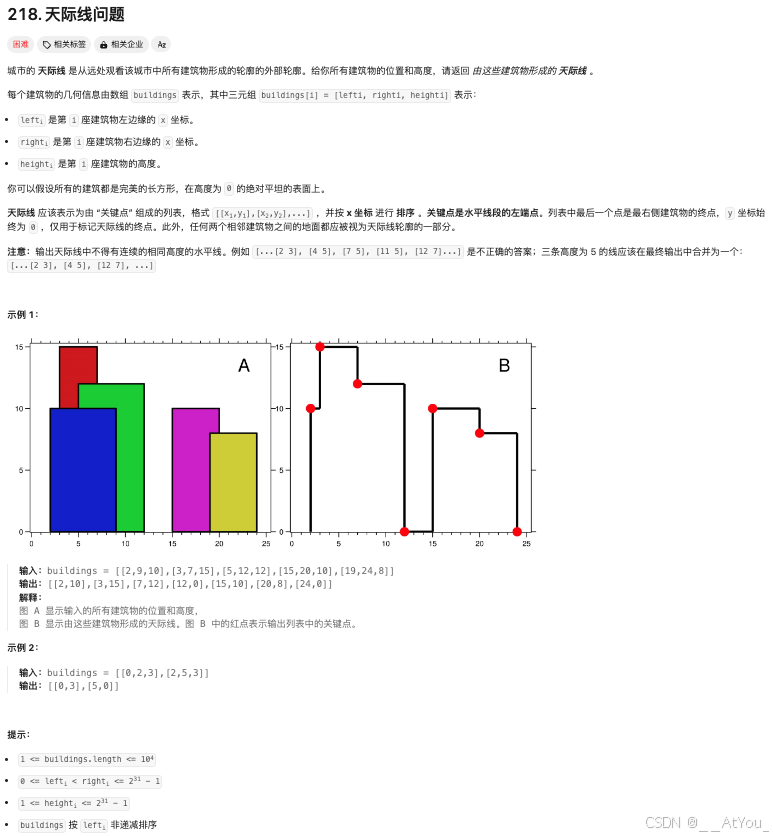文章目录
- 1.游戏界面
- 2.游戏内容
- 2.1 棋盘类型
- 2.2棋盘的初始化
- 2.3 打印棋盘的界面展示
- 3.游戏操作
- 3.1 玩家操作
- 3.2 电脑操作
- 3.3 胜负判定
- 4.代码整合
1.游戏界面
无论写任何程序,我们都需要先去了解它的大概框架,这里我们先把它的初始界面写出来。一个游戏的初始界面会有菜单可供选择,这里我写了一个最基础的游戏菜单,只支持开始游戏和退出游戏。为了能够在不退出游戏的情况下一直游玩,所以这里我写了一个do while循环来让游戏一直进行下去。
#include <stdio.h>
void menu()
{
printf("*************************\n");
printf("******* 1.play *******\n");
printf("******* 0.exit *******\n");
printf("*************************\n");
}
int main()
{
int input = 0;
do
{
menu()//菜单
printf("请选择>");
scanf"%d",&input);
switch(input)
{
case 1:
game();
break;
case 0:
printf("退出游戏!\n");
break;
default:
break;
}
}while(input);
return 0;
}
2.游戏内容
2.1 棋盘类型
写完游戏的界面就轮到了游戏的内容了,让我们来想想三子棋有什么特点,最先想到就是它那3*3的棋盘了,为了实现这个棋盘我们要利用数组来实现。用什么类型的数组呢?这里我会用字符类型的数组,毕竟下棋用数字来作为棋子还是不容易区分的。
void game()
{
//创建棋盘
char chess[4][4] = {0};
}
2.2棋盘的初始化
选择了用字符数组来作为棋盘,初始化我会用‘ ’(空格)来初始化。空格初始化的好处就是不可见,当我们下好棋子后用相应的字符去覆盖掉空格就可以了。
这里我用4*4的数组是为了后续普通用户在用下标下棋时,不用考虑数组下标是0开始的,增加用户的受众。
为什么用多文件编写代码,多文件的编写可以便于后续的修改,多文件可以让代码的可读性更高。
注意头文件game.h放的是函数的声明,game.c放的是函数的定义 test.c是对程序的测试
//game.h
#include <stdio.h>
//以row为行,col为列
void InitChess(char chess[4][4],int row,int col);
//game.c
#include "game.h"
void InitChess(char chess[4][4],int row,int col)
{
for(int i = 1;i<4;++i)
{
for(int j = 1;j<4;++j)
{
chess[i][j] = ' ';
}
}
}
//test.c
#include "game.h"
void game()
{
//创建棋盘
char chess[4][4] = {0};
//初始化棋盘
InitChess(chess,4,4);
}
对函数拓展性的优化,这里的棋盘已经被固定,如果后续我们想要修改棋盘的大小是很麻烦的,所以我们可以定义标识常量。
//game.h
#include <stdio.h>
//以row为行,col为列
#define Row 4
#define Col 4
void InitChess(char chess[Row][Col],int row,int col);
//game.c
#include "game.h"
void InitChess(char chess[Row][Col],int row,int col)
{
for(int i = 1;i<row;++i)
{
for(int j = 1;j<col;++j)
{
chess[i][j] = ' ';
}
}
}
//test.c
#include "game.h"
void game()
{
//创建棋盘
char chess[Row][Col] = {0};
//初始化棋盘
InitChess(chess,Row,Col);
}
2.3 打印棋盘的界面展示
如果我们直接打印这个数组是什么也看不到的,为了让游玩的人可以轻松知道棋盘各个点的坐标,我们要把棋盘打印成这个样子。

void ChessBoard(char chess[Row][Col], int row, int col)
{
for (int i = 1; i < row; ++i)
{
for (int j = 1; j < col; ++j)
{
printf(" %c ", chess[i][j]);
if (j < col - 1)//否则打印最后一个'|',导致右端封闭
printf("|");
}
printf("\n");
if (i < row - 1)
{
for (int j = 1; j < col; ++j)
{
printf("--- ");
}
printf("\n");
}
}
}
3.游戏操作
3.1 玩家操作
三子棋的游戏操作就是在3*3的方格当中选一个未被下过的方格中落子。
当前游戏并不支持双人对战,所以只能实现人机对战。下面为玩家操作:
void Gamer(char chess[Row][Col], int row, int col)
{
int x = 0;//横坐标
int y = 0;//纵坐标
while (1)
{
printf("选择落子坐标>\n");
printf("坐标之间用空格区分\n");
scanf("%d %d", &x, &y);
//判断坐标是否合法
if (x<1 || x>Row - 1 || y<1 || y>Col - 1)
{
printf("坐标不合法\n");
}
//判断所选坐标是否被占据
else if (chess[x][y] != ' ')
{
printf("该坐标被占据\n");
}
else
{
chess[x][y] = 'O';
printf("落子成功\n");
break;
}
}
}
3.2 电脑操作
电脑的逻辑和玩家一样,这里我们让电脑随机下棋。
void Computer(char chess[Row][Col], int row, int col)
{
int x = 0;
int y = 0;
while (1)
{
x = rand() % (row - 1) + 1;
y = rand() % (col - 1) + 1;
if (chess[x][y] != ' ')
{
//
}
else
{
chess[x][y] = 'X';
break;
}
}
}
因为这了我们用了rand函数,所以我必须在前面写上srand来给rand函数提供随机种子,为此我们还需要用到time为srand提供数字来帮助它输出随机种子.
记得加上相应的头文件
int main()
{
int input = 0;
srand((unsigned int)time(NULL));
do
{
menu()//菜单
printf("请选择>");
scanf"%d",&input);
switch(input)
{
case 1:
game();
break;
case 0:
printf("退出游戏!\n");
break;
default:
break;
}
}while(input);
return 0;
}
3.3 胜负判定
在三子棋当中,任何以方的棋子连成一条线就会判断为获胜,无论是一行还是一列还是斜方向。因为只有少量的情况。我能把所有获胜的情况全部都枚举出来就可以了。
关于返回值,因为我们要根据棋盘字符的连线来判断谁是赢家。
规定:返回 ‘O’表示玩家赢,‘X’表示电脑赢 'D’表示平局 'C’表示游戏继续
char Winer(char chess[Row][Col], int row, int col)
{
for (int i = 1; i < row; ++i)
{
if (chess[i][1] == chess[i][2] && chess[i][2] == chess[i][3] && chess[i][1] != ' ')
{
return chess[i][1];
}
}
for (int j = 1; j < col; ++j)
{
if (chess[1][j] == chess[2][j] && chess[2][j] == chess[3][j] && chess[1][j] != ' ')
{
return chess[1][j];
}
}
if (chess[1][1] == chess[2][2] && chess[2][2] == chess[3][3] & chess[1][1] != ' ')
{
return chess[1][1];
}
if (chess[1][3] == chess[2][2] && chess[2][2] == chess[3][1] && chess[2][2] != ' ')
{
return chess[1][3];
}
//平局,判断棋盘是不是已经满了
if (IsFull(chess, row, col))
{
return 'D';
}
return 'C';
}
判断棋盘是否已经下满
bool IsFull(char chess[Row][Col], int row, int col)
{
for (int i = 1; i < row; ++i)
{
for (int j = 1; j < col; ++j)
{
if (chess[i][j] == ' ')
return false;
}
}
return true;
}
4.代码整合
关于三子棋的简单游戏逻辑就是这么多了,下面我们要把我们写到的函数整合到一起。
//game.h
#include <stdio.h>
#include <stdbool.h>
#include <stdlib.h>//rand和srand的头文件
#include <time.h>//time的头文件
#define Row 4
#define Col 4
void InitChess(char chess[Row][Col], int row, int col);
void ChessBoard(char chess[Row][Col], int row, int col);
void Gamer(char chess[Row][Col], int row, int col);
void Computer(char chess[Row][Col], int row, int col);
char Winer(char chess[Row][Col], int row, int col);
bool IsFull(char chess[Row][Col], int row, int col);
//game.c
#include "game.h"
void InitChess(char chess[Row][Col], int row, int col)
{
for (int i = 1; i < row; ++i)
{
for (int j = 1; j < col; ++j)
{
chess[i][j] = ' ';
}
}
}
void ChessBoard(char chess[Row][Col], int row, int col)
{
for (int i = 1; i < row; ++i)
{
for (int j = 1; j < col; ++j)
{
printf(" %c ", chess[i][j]);
if (j < col - 1)//否则打印最后一个'|',导致右端封闭
printf("|");
}
printf("\n");
if (i < row - 1)
{
for (int j = 1; j < col; ++j)
{
printf("--- ");
}
printf("\n");
}
}
}
void Gamer(char chess[Row][Col], int row, int col)
{
int x = 0;//横坐标
int y = 0;//纵坐标
while (1)
{
printf("选择落子坐标>\n");
printf("坐标之间用空格区分\n");
scanf("%d %d", &x, &y);
//判断坐标是否合法
if (x<1 || x>Row - 1 || y<1 || y>Col - 1)
{
printf("坐标不合法\n");
}
//判断所选坐标是否被占据
else if (chess[x][y] != ' ')
{
printf("该坐标被占据\n");
}
else
{
chess[x][y] = 'O';
printf("落子成功\n");
break;
}
}
}
void Computer(char chess[Row][Col], int row, int col)
{
int x = 0;
int y = 0;
while (1)
{
x = rand() % (row - 1) + 1;
y = rand() % (col - 1) + 1;
if (chess[x][y] != ' ')
{
//
}
else
{
chess[x][y] = 'X';
break;
}
}
}
char Winer(char chess[Row][Col], int row, int col)
{
for (int i = 1; i < row; ++i)
{
if (chess[i][1] == chess[i][2] && chess[i][2] == chess[i][3] && chess[i][1] != ' ')
{
return chess[i][1];
}
}
for (int j = 1; j < col; ++j)
{
if (chess[1][j] == chess[2][j] && chess[2][j] == chess[3][j] && chess[1][j] != ' ')
{
return chess[1][j];
}
}
if (chess[1][1] == chess[2][2] && chess[2][2] == chess[3][3] & chess[1][1] != ' ')
{
return chess[1][1];
}
if (chess[1][3] == chess[2][2] && chess[2][2] == chess[3][1] && chess[2][2] != ' ')
{
return chess[1][3];
}
//平局,判断棋盘是不是已经满了
if (IsFull(chess, row, col))
{
return 'D';
}
return 'C';
}
bool IsFull(char chess[Row][Col], int row, int col)
{
for (int i = 1; i < row; ++i)
{
for (int j = 1; j < col; ++j)
{
if (chess[i][j] == ' ')
return false;
}
}
return true;
}
//test.c
#include "game.h"
void game()
{
//创建棋盘
char chess[Row][Col] = { 0 };
//初始化棋盘
InitChess(chess, Row, Col);
char w = 0;
while (1)
{
//打印棋盘
ChessBoard(chess, Row, Col);
//玩家操作
Gamer(chess, Row, Col);
//输赢判断
w = Winer(chess, Row, Col);
if (w != 'C')
break;
//电脑操作
Computer(chess, Row, Col);
//输赢判断
char w = Winer(chess, Row, Col);
if (w != 'C')
break;
}
ChessBoard(chess, Row, Col);
if (w == 'D')
printf("平局\n");
else if (w == 'O')
printf("玩家获胜\n");
else
printf("电脑获胜\n");
}
void menu()
{
printf("*************************\n");
printf("******* 1.play *******\n");
printf("******* 0.exit *******\n");
printf("*************************\n");
}
int main()
{
int input = 0;
srand((unsigned int)time(NULL));
do
{
menu();//菜单
printf("请选择>");
scanf("%d", & input);
switch (input)
{
case 1:
game();
break;
case 0:
printf("退出游戏!\n");
break;
default:
break;
}
} while (input);
return 0;
}
完

















![[图解]企业应用架构模式2024新译本讲解23-标识映射2](https://i-blog.csdnimg.cn/direct/4737577293f141f7a6a0d693201a3178.png)

